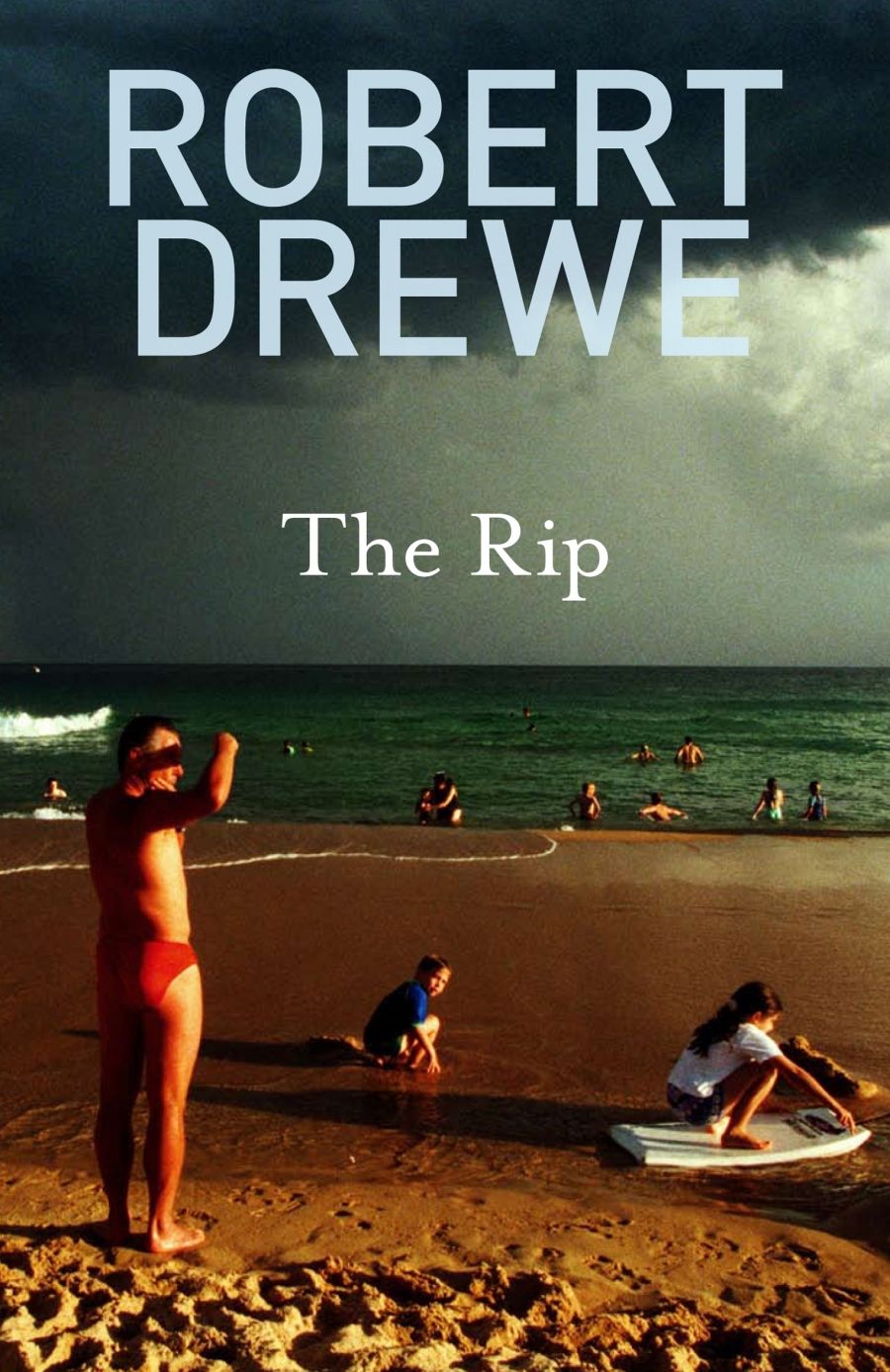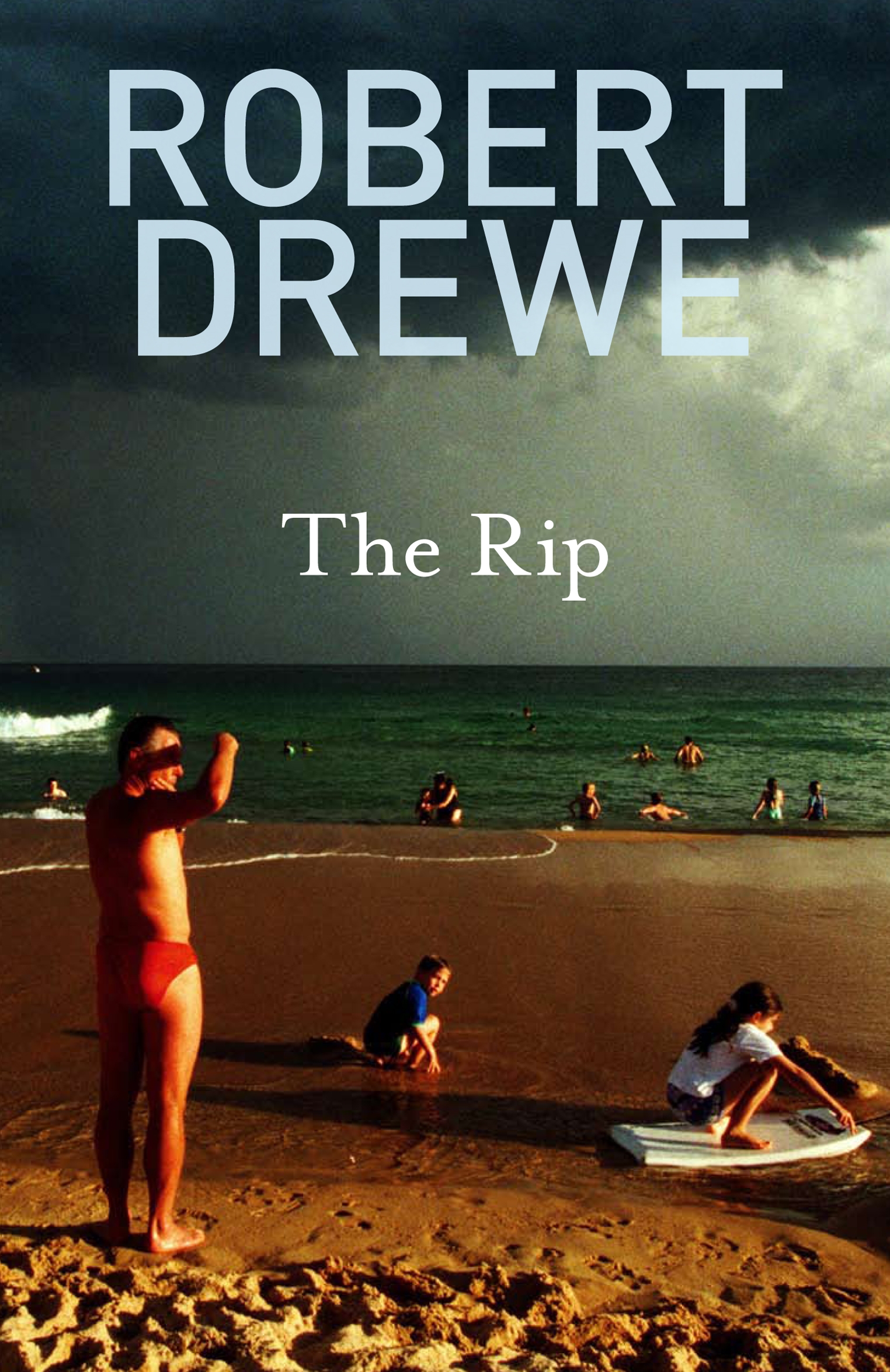
- Free Article: No
- Contents Category: Short Stories
- Custom Article Title: Drowning, not waving
- Review Article: Yes
- Article Title: Drowning, not waving
- Online Only: No
- Custom Highlight Text:
In Robert Drewe’s latest collection of stories, people often find themselves caught in rip tides of ill fortune. Snake bites, car accidents, marauding dingoes, unexpected adulteries – these are all part of the rough seas of circumstance that crash without warning over the lives of Drewe’s characters. The dominant note of the collection is this quality of suddenness: out of the blue, bad things happen to good people. Most of The Rip’s characters are benign and likeable enough (even the shonky businessman awaiting trial on fraud charges is a long way from outright villainy), but each of them discovers the world turned upside down by what the title story calls ‘the abruptness of savage chance’.
- Book 1 Title: The Rip
- Book 1 Biblio: Hamish Hamilton, $35 hb, 230 pp
- Book 1 Cover Small (400 x 600):

- Book 1 Cover (800 x 1200):

Drewe’s fiction always seems to be set in places with great water views, and these latest stories are no exception. Characters in The Rip make the most of their close proximity to the water: beachcombing at Cape Leeuwin, kayaking in the Swan’s estuary, whale watching at Byron Bay. Several of the stories are located just off the coast, in the hinterland somewhere south of the Tweed. For Drewe, this region is home to gormless hippie types, hard-bitten mango farmers, and Sydneysiders in search of a ‘tree change’. In ‘How to Kill a Cane Toad’, a middle-aged city couple has made the move to the hinterland. But their best-laid plans of rural bliss soon go awry, thanks to a combination of noisome wildlife and gun-toting neighbours. (Lifestyle magazines, the husband of the couple pithily observes, never mention that getting back to basics also means getting on with the locals.)
Drewe is in fine form here, bemoaning the cane toad’s invasion of consciousness as well as countryside (the dissonant croaking of the species is likened to a hundred different dial tones sounding in your ear at once). For all its laconic humour, the story ends darkly. The couple begin to drift apart: ‘We’re all on our individual journeys, Daniel,’ the wife announces with a guru-like smugness. Here, as elsewhere in the collection, one of the most dangerous kinds of rip is the sudden onset of mid-life loneliness.
Sex also tends to have dark consequences in Drewe’s writing. By sheer happenstance a woman learns of her husband’s philandering in ‘The Obituary of Gina Lavelle’, with seemingly fatal results. In ‘The Cartoonist’, a sensitive teenager stumbles upon his recently divorced mother in flagrante delicto; his only way of coping with the shock of this Freudian scene is to convert it into art. Drewe often equates eros with embarrassment. In ‘The Lap Pool’, the main character doesn’t know where to look when a nubile snake-wrangler begins breastfeeding her child in front of him: ‘despite himself [Leon K.] felt a sunburst of lust, instantly overshadowed by guilt.’ The episode leads Leon K. to wonder if he now has some sort of intimate connection with the woman, even though he has known her for less than an hour. ‘The Lap Pool’ is unusual in this respect. Almost all of the other stories in the collection depict the various gulfs that arise between people: spousal abandonment, sexual brush-off, family discord and so on. In this overwhelmingly loveless world, Leon K. at least has a shot at intimacy.
Perhaps the finest of the thirteen stories is ‘The Whale Watchers’. An authorial note acknowledges a debt to ‘Reunion’, John Cheever’s famous five-page dissection of father–son relations, though for my money Drewe’s story is both funnier and sadder. The whale watchers of the title are a foursome: a newly widowed father, his thirtyish son and their respective female partners. The mood of the story is a distinctly elegiac one, leavened by a cringingly comical restaurant scene. When the son invokes the memory of his dead mother, the gulf between the two men suddenly becomes as wide as Sydney Heads. But were the son’s words ill-chosen or deliberate? In Cheeveresque fashion, there are no easy answers here; the reader is left stranded on the rocky shores of ambiguous conclusion.
Drewe’s stories are often Delphic in this way. The very title of ‘The Water Person and the Tree Person’ suggests how Australian society might be divided along lines of mutual misunderstanding. In ‘Stones Like Hearts’, an estranged wife considers throwing her wedding ring into the sea to symbolise the end of her marriage. The melodrama of such a gesture does not escape her: ‘she felt like a character in a book or film, the sort of story that in happier days would have irritated her.’ But her plans are disrupted by the discovery of a dead body, washed up on the beach where she is walking. After escaping to a nearby McDonald’s, the woman begins to wonder what she should do next. Not the least of The Rip’s calamities is that queasy sense of indecision we all experience at some point in our lives.
Isaac Babel once said that a short story should have the precision of a bank cheque. Drewe’s stories have that quality, written with a sharp eye for detail and a sharp nib to match. His style has always been a taut one, full of precise visual metaphors. A jellyfish seems ‘so perfectly round it could have been drawn with a compass’, while a hippie Lothario is said to be of the ‘drawstring-trousers-and-no-underwear’ type. Visual exactitude is one reason why these stories are so compulsively readable; another is their present-dayness. Here is the way we live now – a world of Web designers and pro-surfers, organic coffee beans and Margaret River cabernet, Bunnings hardware stores and HealthWorks fitness clubs. Details like this matter, because they make Drewe’s coincident-packed fiction seem plausible. Art is clarity, after all, and the stories of The Rip ring true.


Comments powered by CComment